Exploring the Magic of Mediterranean Interior Design. A Complete Guide

Table of Contents
Mediterranean interior design is a style that exudes an enduring charm and timeless appeal, Drawing inspiration from the coastal regions bordering the Mediterranean Sea
This design aesthetic captures the essence of sun-soaked landscapes, rustic elegance, and a relaxed, inviting atmosphere.
With its warm colors, natural materials, and distinctive architectural features, Mediterranean interior design has gained popularity worldwide for its ability to infuse homes with a sense of both luxury and comfort.
In this article, we will delve deeper into the captivating world of Mediterranean interior design, exploring its origins, defining characteristics, and how to bring this delightful style into your own living spaces.
What is the Mediterranean Interior Design Style?

Mediterranean Interior Design is a captivating design style that transports the essence of the Mediterranean region directly into your living spaces.
Rooted in the coastal areas bordering the Mediterranean Sea, this style embodies the relaxed elegance, rustic charm, and timeless allure of this sun-drenched region.
Definition and Origins of Mediterranean Interior Design
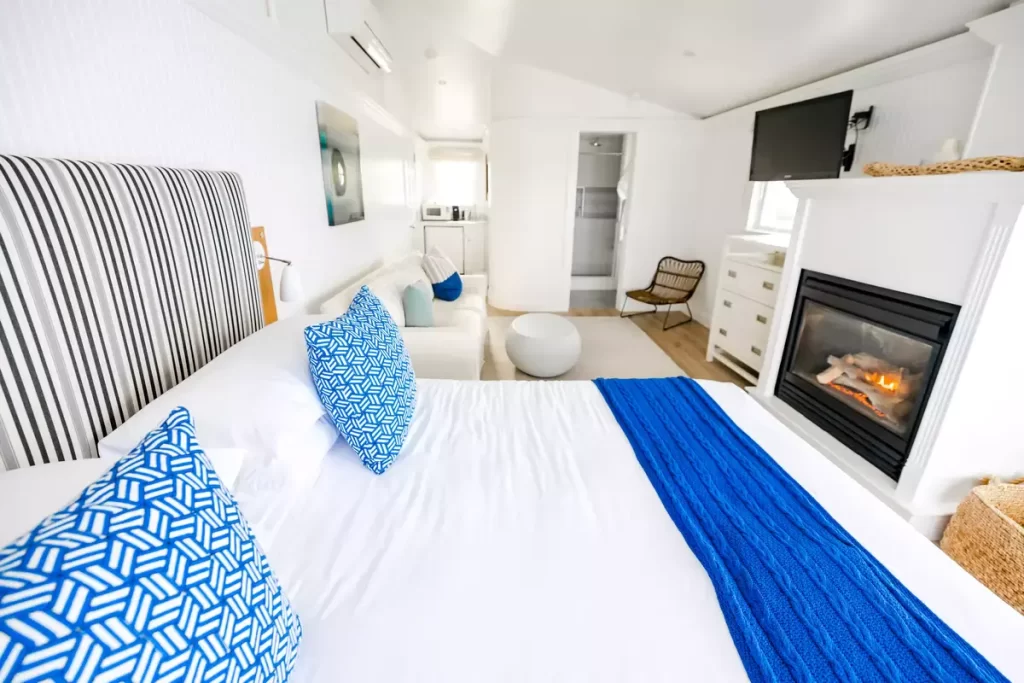
The roots of Mediterranean interior design can be traced back to the historical crossroads of ancient civilizations that flourished around the Mediterranean Sea.
This design style borrows from the rich cultural tapestry of countries like Italy, Greece, Spain, and Morocco.
One key defining aspect of Mediterranean interior design is its ability to capture the ambiance of these diverse regions and distill it into a cohesive aesthetic.
From the whitewashed buildings of the Greek islands to the terracotta-hued villas of Tuscany, this style pays homage to the unique architectural and design traditions that have evolved over centuries.
Historical Influences and Regions Where Mediterranean Interior Design Style Thrived

Mediterranean interior design has its roots in the architectural and design principles developed by ancient civilizations such as the Greeks and Romans.
The concept of harmonizing indoor and outdoor spaces, the use of natural materials like stone and wood, and the incorporation of decorative elements like mosaics and wrought iron, all find their origins in these ancient cultures.
Throughout history, this design style thrived in regions with a Mediterranean climate, where the need for cool, shaded interiors and open layouts was paramount.
Coastal towns and cities in Italy, Greece, Spain, and the southern regions of France have been particularly influential in shaping the Mediterranean aesthetic.
Distinctive Characteristics That Define Mediterranean Interior Design
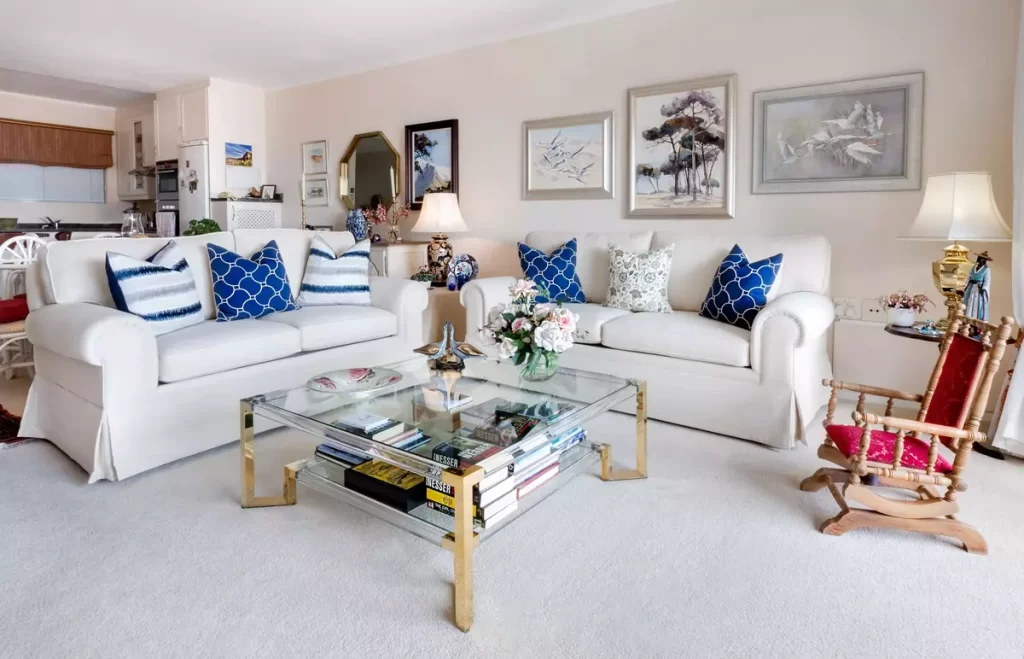
Mediterranean interior design is characterized by several distinctive features that set it apart from other styles:
Warm Earthy Tones: The color palette of Mediterranean decor revolves around warm, earthy tones such as terracotta, ochre, and sandy beige.
These colors evoke the sunbaked landscapes of the Mediterranean region.
Natural Materials: This style celebrates the use of natural materials like stone, wood, and terracotta.
Exposed wooden beams, stone walls, and terracotta tile floors are common design elements.
Architectural Details: Mediterranean interiors often feature architectural details like arches, domes, and columns.
These elements create a sense of grandeur and timeless beauty.
Mosaic and Tilework: Elaborate mosaic patterns and decorative tilework are prevalent in Mediterranean design.
These intricate details add a touch of artistry to spaces.
Open Layouts: Mediterranean interiors are known for their open, airy layouts that allow for a seamless flow between indoor and outdoor spaces.
Courtyards, terraces, and balconies are often integrated into the design.
Wrought Iron Accents: Wrought iron is a prominent feature, appearing in elements like railings, light fixtures, and furniture.
It adds a touch of elegance and craftsmanship to the décor.
Mediterranean interior design captures the essence of a region where history, culture, and nature intertwine.
Its timeless appeal lies in its ability to create spaces that are both welcoming and visually stunning, making it a popular choice for those seeking to infuse their homes with a touch of Mediterranean magic.
Colors for Mediterranean Interior Design
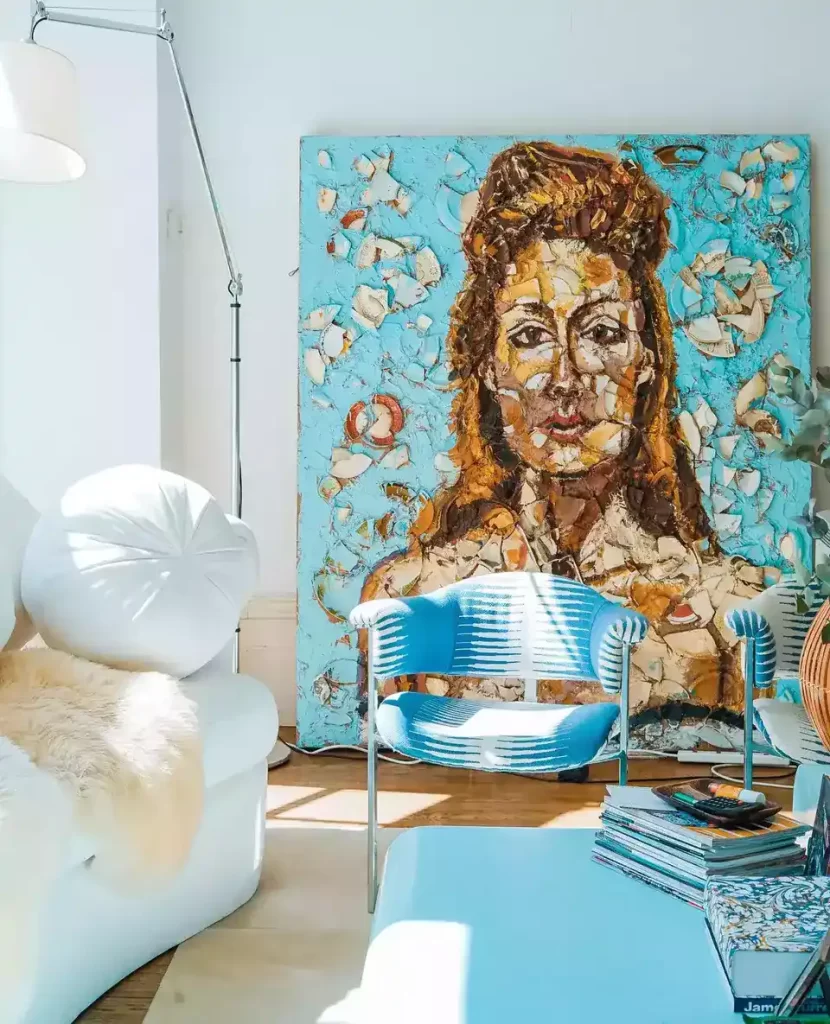
When it comes to Mediterranean interior design, color plays a pivotal role in capturing the essence of the sun-soaked Mediterranean landscapes, and it’s essential to get it right.
This style thrives on a harmonious blend of earthy tones, blues, and whites, which together create a warm and inviting atmosphere reminiscent of the Mediterranean coast.
Exploring the Color Palette
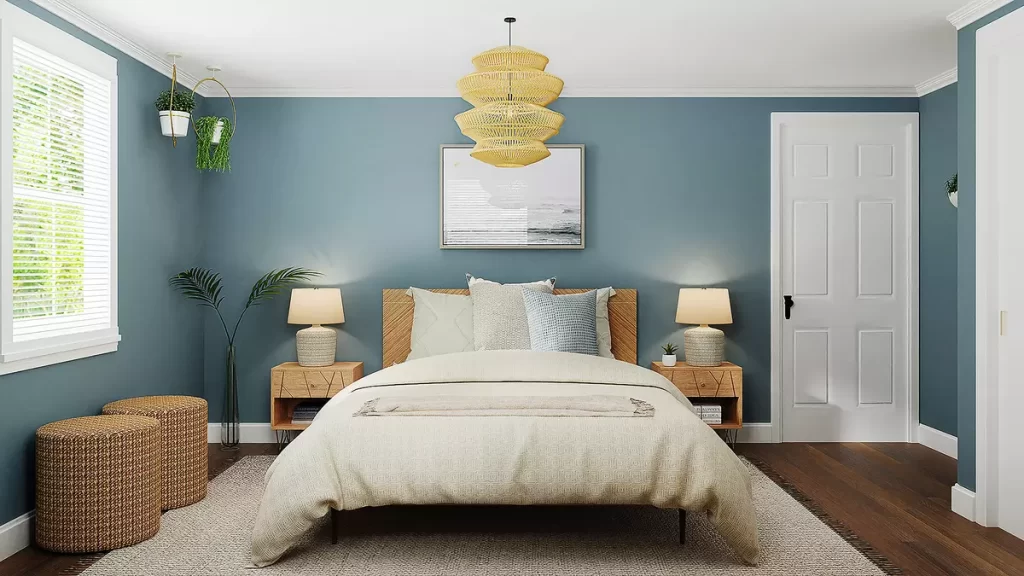
Earthy Tones:
Earthy hues such as terracotta, sienna, and sandy beige are the backbone of Mediterranean interior design.
These colors mirror the sun-baked earth and rustic charm of the Mediterranean region, infusing spaces with warmth and timeless appeal.
They can be used on walls and floors and as accents in furniture and decor items.
Consider terracotta tiles in kitchens or exposed wooden beams in living rooms.
Blues:
Blues in varying shades, from deep cobalt to vibrant turquoise, are integral to this style.
They draw inspiration from the Mediterranean Sea itself, offering a refreshing contrast to the earthy tones while evoking a sense of tranquility and serenity.
Incorporate them through textiles, upholstery, and decorative items like ceramic tiles or pottery.
Deep blues can be used for furniture upholstery, while lighter blues work well for curtains or cushions.
Whites:
Crisp, clean whites are another fundamental element in Mediterranean décor.
They serve as a canvas that highlights the other colors and reflects the Mediterranean sunlight, creating an airy and bright ambiance.
Use it for walls, ceilings, and larger pieces of furniture.
It creates a clean, timeless backdrop that allows other colors to shine.
White also reflects light, enhancing the overall brightness of the space.
Tips on Using Colors Effectively

Balance is Key: Achieve a harmonious balance between the three key colors.
For instance, if you opt for bold blues, balance them with neutral earthy tones and white accents.
Layering: Layering different shades of blues and earthy tones creates depth and visual interest.
Mix and match textiles, cushions, and decorative accessories in various hues.
Natural Light: Make the most of natural light to enhance the colors.
Large windows and strategically placed mirrors can help bounce light around the room, making the colors come alive.
Accessorize Thoughtfully: Incorporate colorful accents like mosaic tiles, pottery, or artwork that reflect the Mediterranean color palette.
These details can tie the room together and add personality.
Customization: Tailor the color palette to your personal preferences.
While the traditional Mediterranean palette is timeless, don’t hesitate to incorporate your unique style and preferences to make the space your own.
In the world of Mediterranean interior design, colors play a pivotal role in creating a warm and inviting atmosphere that echoes the beauty of the Mediterranean coast.
By embracing earthy tones, blues, and whites, and using them effectively, you can infuse your living spaces with the enchanting allure of this timeless style.
Mediterranean-Style Materials
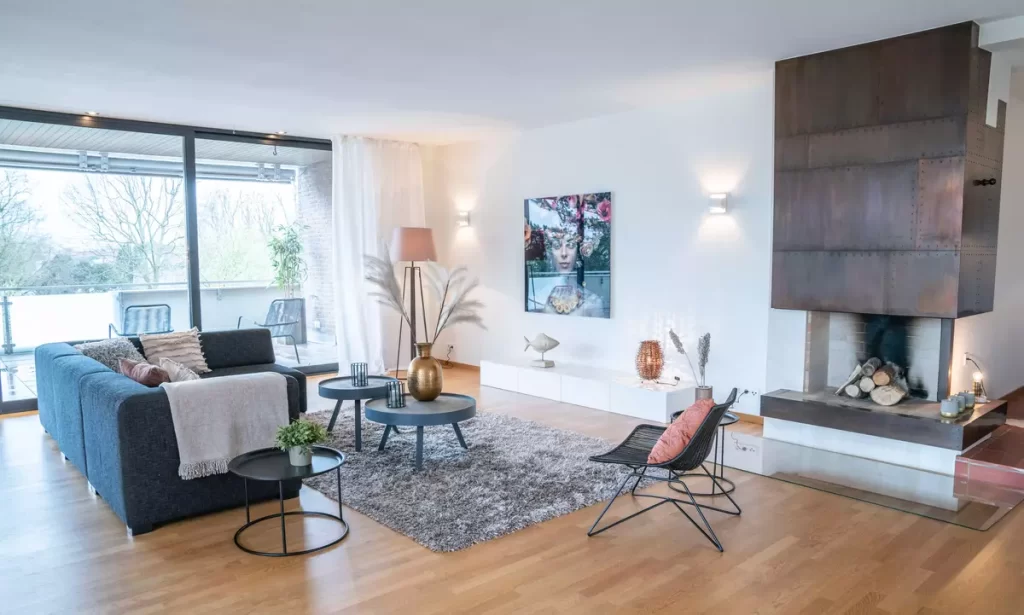
In the world of Mediterranean interior design, the choice of materials plays a pivotal role in capturing the essence of this timeless and captivating style.
This aesthetic celebrates the use of natural, earthy materials and intricate craftsmanship, resulting in spaces that exude warmth, character, and a sense of history.
Stone: Stone is a cornerstone of Mediterranean interior design.
Its enduring appeal lies in its ability to evoke the rugged beauty of the Mediterranean landscape.
Commonly used for flooring, walls, and even fireplaces, natural stones like limestone, travertine, and marble add a sense of timeless elegance to interiors.
Their neutral hues complement the color palette of the Mediterranean interior design style perfectly.
Wood: Wood, with its warm and rich tones, is another fundamental material in this style.
Exposed wooden beams, rustic furniture, and wooden flooring provide a sense of authenticity and rustic charm.
Darker wood varieties like walnut or mahogany can be used for furniture and cabinetry, adding depth to the design.
Terracotta: Terracotta, which means “baked earth” in Italian, is a quintessential material in Mediterranean decor.
Terracotta tiles, often featuring intricate patterns and warm reddish-brown hues, are used for flooring and decorative elements.
These tiles, often adorned with intricate patterns and vibrant colors, serve as focal points in kitchens, bathrooms, and outdoor spaces.
They bring a touch of artistry and history to the decor, showcasing the region’s cultural richness.
Textiles: Mediterranean interiors incorporate textiles like linen, cotton, and wool, which provide a tactile and cozy feel.
You’ll find these textiles in upholstery, curtains, rugs, and decorative cushions.
Traditional patterns such as ikat and intricate embroidery are common, adding a layer of depth and culture to the design.
Wrought Iron: Wrought iron is a significant design element, often seen in Mediterranean-style furniture, light fixtures, and railing.
Its intricate and ornate designs add a touch of old-world elegance and craftsmanship.
Whether in the form of a wrought iron chandelier or a decorative balcony railing, it lends an air of timeless beauty to the space.
Mosaic: Mosaic art is deeply embedded in Mediterranean interior design.
From intricate mosaic-topped tables to decorative mosaic tiles adorning walls and floors, this art form adds a burst of color and visual interest.
Mosaic patterns draw inspiration from the region’s history, incorporating elements of nature, geometric shapes, and cultural motifs.
In essence, the use of natural materials, handcrafted tiles and textiles, wrought iron, and mosaics are instrumental in achieving the authentic and inviting atmosphere of Mediterranean interior design.
These materials not only provide aesthetic beauty but also connect the interior spaces with the natural surroundings, creating an environment that is both visually stunning and deeply rooted in history and culture.
Key Features of a Mediterranean-Style Room

Mediterranean interior design is celebrated for its unique and captivating features that transport the essence of the Mediterranean coast directly into your living spaces.
The layout and structure of a typical Mediterranean-style room are designed to create an atmosphere of warmth, relaxation, and timeless beauty.
Layout and Structure

Open Layout: A hallmark of Mediterranean-style rooms is their open and airy layout.
These spaces are designed to flow seamlessly, allowing for a sense of spaciousness and a connection with the outdoors.
This open concept is ideal for Mediterranean climates, where indoor-outdoor living is common.
Open layouts connect different areas of the home, such as the living room, dining room, and kitchen, making it easy for family and guests to interact.
Architectural Arches: Arches are a defining architectural feature in Mediterranean design.
Whether in the form of doorways, windows, or interior arches, they add a sense of grandeur and elegance.
Arches also create a natural transition between rooms and serve as focal points.
Domes: In some Mediterranean-style spaces, domes or vaulted ceilings are incorporated.
Whether in the form of a central dome or smaller decorative ones, add a sense of height and airiness to the room.
These architectural elements provide a sense of drama and luxury while also enhancing the play of natural light within the room.
They often feature intricate decorative patterns.
Natural Light and Ventilation

Abundant Windows and Doors: Mediterranean-style rooms embrace natural light with large windows and glass doors that allow sunlight to flood the space.
These openings often feature wooden shutters, which can be adjusted to control the amount of light and provide privacy.
Courtyards and Terraces: Many Mediterranean-style homes include interior courtyards or terraces that serve as sources of natural light and ventilation.
These outdoor spaces create a sense of openness and provide cross-ventilation, helping to cool the interiors in warm weather.
Reflective Surfaces: To maximize natural light, Mediterranean interiors often incorporate reflective surfaces like polished stone floors or white-painted walls.
These surfaces bounce light around the room, creating a bright and cheerful atmosphere.
Ventilation: Mediterranean regions can experience warm temperatures, so proper ventilation is crucial.
High ceilings and well-placed windows and doors allow for the circulation of fresh air throughout the space, ensuring comfort even during the hottest months.
In conclusion, the key features of a Mediterranean-style room revolve around creating an open, inviting, and light-filled space.
The use of architectural arches, domes, and open layouts adds a sense of grandeur and elegance, while abundant natural light and ventilation connect the interior with the natural beauty of the Mediterranean coast.
These elements combine to create an atmosphere of timelessness and comfort, making Mediterranean interior design a popular and enduring choice for homes worldwide.
10 Tips for Achieving Mediterranean Interior Design
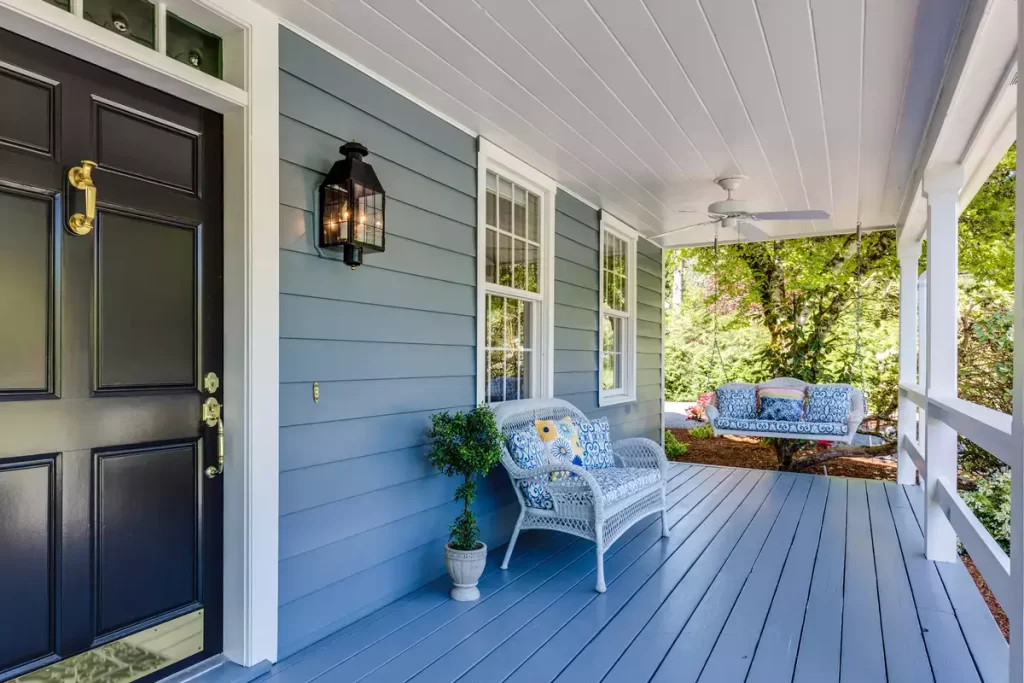
Embracing the enchanting allure of Mediterranean interior design in your home can transport you to the sun-soaked coasts of southern Europe and northern Africa.
Whether you’re starting from scratch or looking to infuse existing spaces with this timeless style, here are practical tips to help you achieve the Mediterranean look and feel.
- Start with a Neutral Base
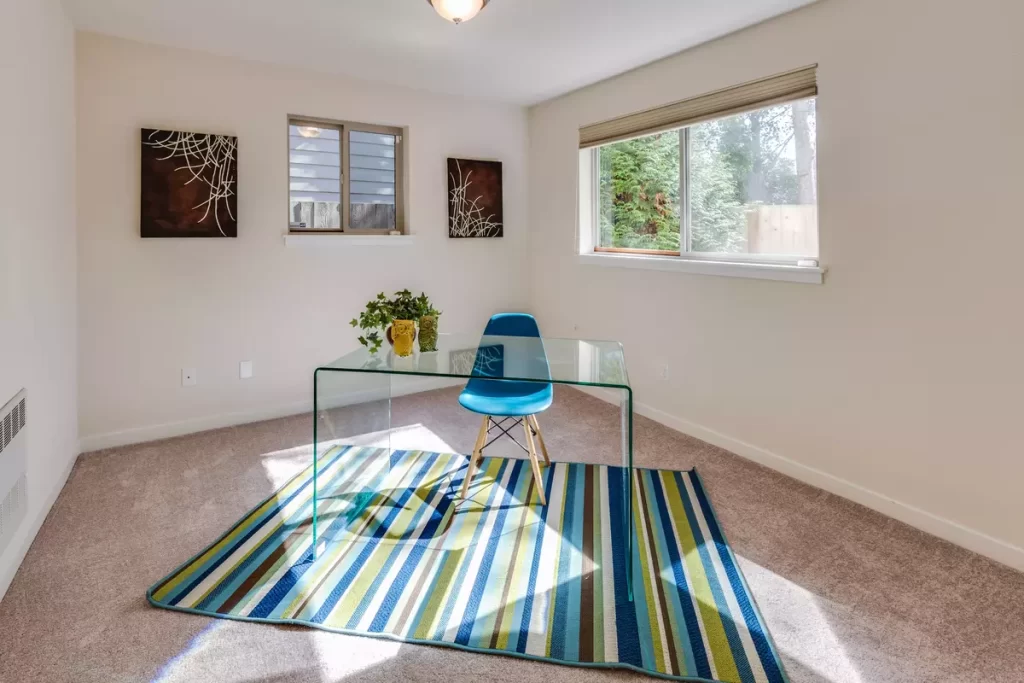
Begin by painting your walls in neutral earthy tones like terracotta, sandy beige, or warm gray.
A neutral backdrop provides the perfect canvas for Mediterranean elements to shine.
Consider using natural materials like limestone or terracotta tiles for your flooring.
- Incorporate Earthy Colors
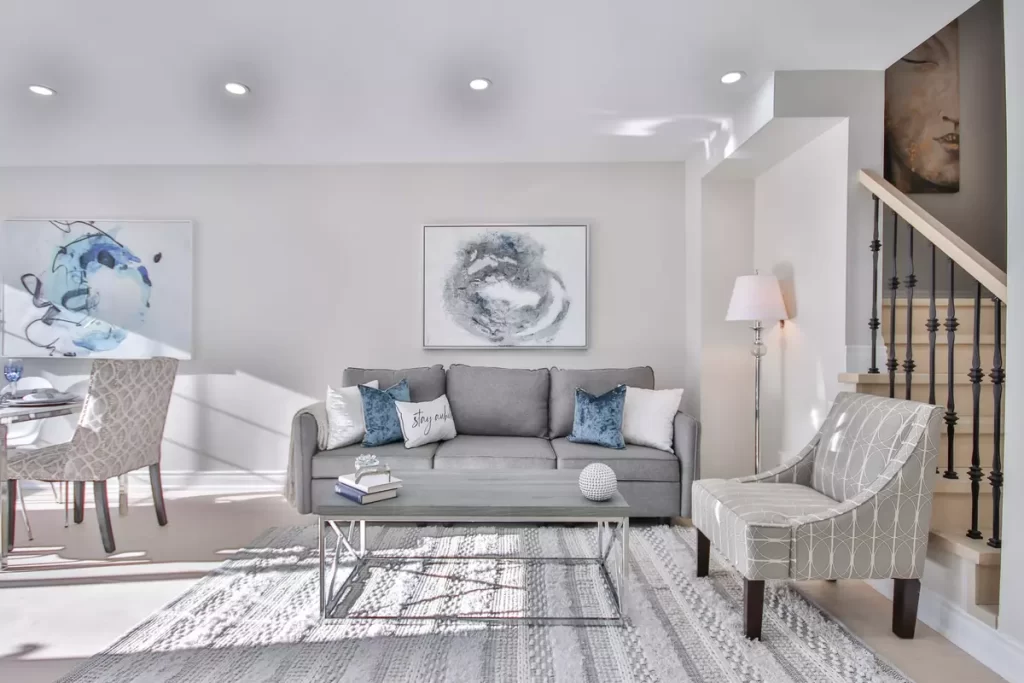
Introduce the quintessential Mediterranean color palette into your decor.
Think rich terracotta, deep blues, vibrant turquoise, and shades of Mediterranean greens.
Use these colors for textiles, upholstery, and accents like throw pillows and curtains.
- Embrace Natural Materials
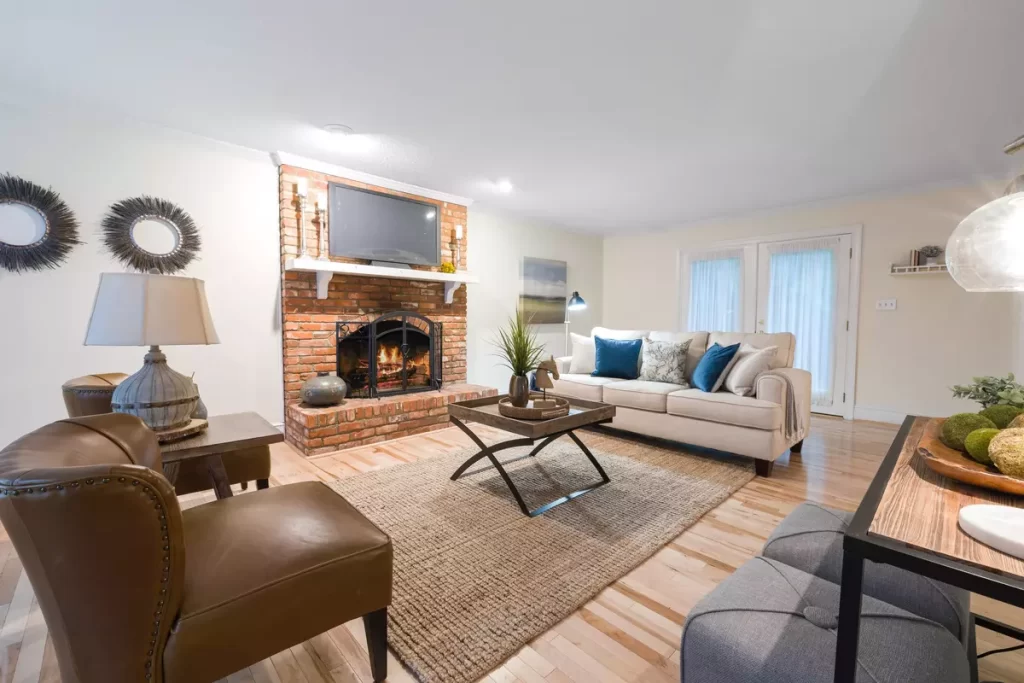
Select furniture and decor elements made from natural materials.
Look for rustic wooden furniture, wrought iron accents, and terracotta pottery.
These materials not only add authenticity but also enhance the warm and earthy ambiance of your space.
- Integrate Archways and Arches

Architectural features are key in Mediterranean design.
Incorporate arches in doorways, windows, and interior spaces.
If possible, create arched niches or alcoves to display decorative items or house potted plants.
- Showcase Decorative Tiles

Mediterranean-style tiles are a must.
Consider mosaic tile patterns for kitchen backsplashes, bathroom floors, and decorative accents.
Hand-painted ceramic tiles can also be used as decorative elements on stair risers or tabletops.
- Use Wrought Iron Accents

Wrought iron adds a touch of elegance.
Incorporate it in lighting fixtures, stair railings, and furniture details.
Wrought iron chandeliers or pendant lights can become focal points in dining rooms or entryways.
- Create Cozy Seating Areas

Mediterranean homes are known for their inviting seating areas.
Arrange plush sofas and oversized chairs around a central coffee table.
Use earth-toned upholstery and plenty of cushions for comfort and style.
- Pay Attention to Lighting
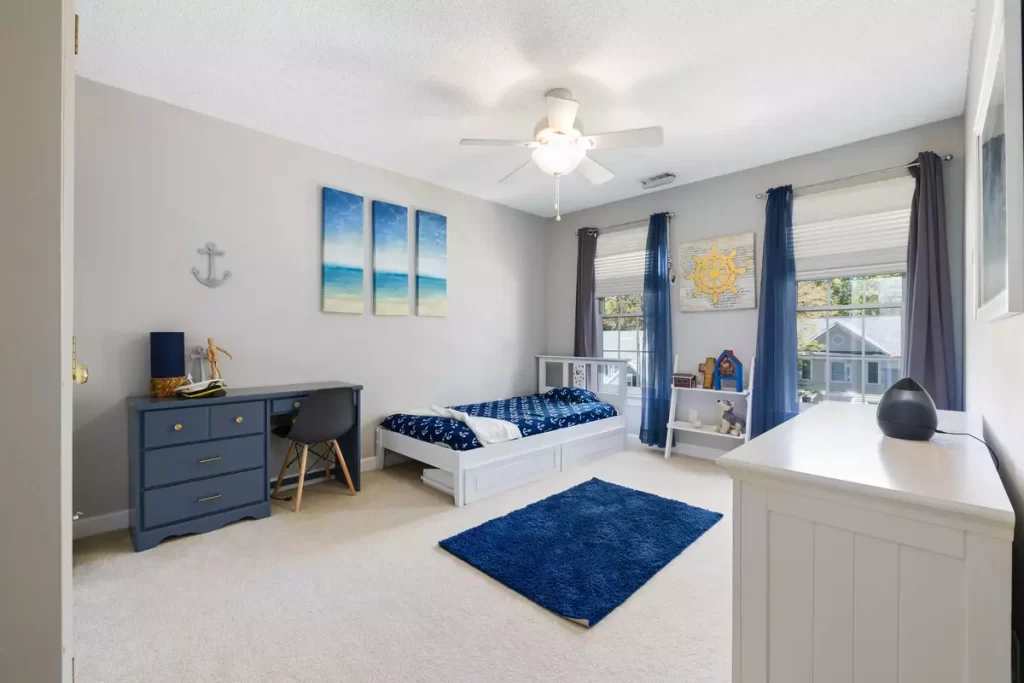
Opt for warm, ambient lighting.
Pendant lights with intricate designs or lantern-style fixtures are ideal.
Allow natural light to flood your space through large windows or French doors, but use wooden shutters for privacy and light control.
- Incorporate Outdoor Spaces

If you have access to an outdoor area, create a Mediterranean-style courtyard or terrace.
Use terracotta pots, wrought iron furniture, and decorative tiles to extend the design outdoors.
This allows for a smooth transition between indoor and outdoor living.
- Focus on Balance and Simplicity

Keep your design balanced and simple.
Avoid clutter and excessive ornamentation.
Let the key elements of Mediterranean design shine without overwhelming the space.
By following these practical tips and incorporating Mediterranean elements into various rooms of your home, you can achieve the warm and inviting ambiance that characterizes Mediterranean interior design.
Remember that balance and simplicity are key to capturing the timeless allure of this captivating style, transporting you to the sun-drenched coasts of the Mediterranean in the comfort of your own home.
Mediterranean Interior Design on a Budget

Embracing the captivating allure of Mediterranean interior design doesn’t have to break the bank.
With some creativity, resourcefulness, and strategic choices, you can infuse your home with the warm and inviting ambiance of the Mediterranean coast while staying within your budget.
Here’s a guide to achieving Mediterranean-inspired decor without overspending.
- Start with a Clear Plan
Before you begin, create a detailed plan outlining the specific elements of Mediterranean design you want to incorporate into your space.
This plan will help you stay focused and avoid impulse purchases.
- Prioritize Key Elements
Identify the key elements that define Mediterranean design, such as earthy colors, natural materials, and decorative tiles.
Prioritize these elements as they have the most significant impact on the overall aesthetic.
- Shop Secondhand and Vintage
Scour thrift stores, flea markets, and online marketplaces for vintage and secondhand furniture and decor pieces.
You can often find unique items that fit the Mediterranean style at a fraction of the cost of new ones.
- DIY Décor
Tap into your creative side by embarking on DIY projects.
Create your own mosaic tile tabletop, refurbish old wooden furniture, or paint decorative patterns on plain ceramic vases.
These personalized touches can add authenticity to your decor.
- Repurpose Existing Items
Before buying new furniture or decor, consider how you can repurpose existing items.
For example, a coat of terracotta paint can transform old pots into Mediterranean-style planters, and an area rug can cover worn flooring.
- Opt for Imitation Materials
While natural stone and wood are ideal, budget-friendly alternatives like laminate or vinyl flooring can mimic their appearance convincingly.
Look for imitation materials that capture the look of Mediterranean design without the high cost.
- Hunt for Bargain Textiles
Shop for budget-friendly textiles like curtains, throw pillows, and upholstery fabrics at discount stores or online marketplaces.
Look for those that feature Mediterranean-inspired patterns or earthy colors.
- Focus on Lighting
Invest in a statement lighting fixture that reflects the Mediterranean aesthetic.
A wrought iron chandelier or pendant light can become a focal point without the need for a complete room overhaul.
- Create a Mediterranean Color Palette
You can achieve the Mediterranean color palette without repainting all your walls.
Select a few key walls or accents to paint in warm earthy tones or vibrant blues.
This targeted approach saves both time and money.
- Accessorize Mindfully
Decorative accessories like ceramic vases, decorative tiles, and wrought iron candleholders can be found at budget-friendly prices.
Be patient and shop around for deals that align with your design vision.
- Incorporate Plants
Introduce potted plants like olive trees, succulents, or herbs to bring a touch of Mediterranean greenery into your home.
These plants not only enhance the decor but also connect you with the region’s natural beauty.
- Do It in Stages
If your budget is limited, don’t feel the need to complete your Mediterranean makeover all at once.
Gradually accumulate pieces that align with your vision, allowing you to enjoy the process without financial strain.
By approaching Mediterranean interior design with a budget-conscious mindset and focusing on key elements that define the style, you can create a warm and inviting Mediterranean-inspired space that captures the essence of the Mediterranean coast without exceeding your budget.
Remember that authenticity is achievable through creativity and strategic choices, making your Mediterranean design dreams a reality within your means.
In the world of interior design, Mediterranean interior design stands out as a captivating and inviting style that draws inspiration from the timeless allure of the Mediterranean coast.
With its warm earthy colors, natural materials, and distinctive architectural features like arches and domes, it creates spaces that are both visually stunning and welcoming.
We encourage you to explore and embrace the enchanting world of Mediterranean interior design.
Whether you’re drawn to the rustic elegance of Tuscan villas, the vibrant blues of Greek islands, or the intricate mosaic artistry of Morocco, there’s a Mediterranean style that can transform your home into a cozy retreat.
